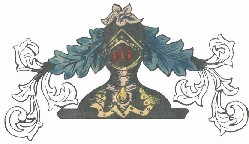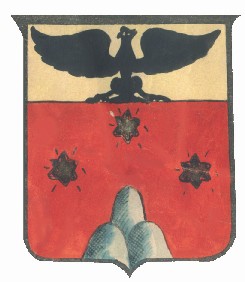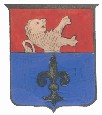|
Itineraries
Eastern Liguria and the Cinque Terre
Liguria sea north Italy
Description of the
itinerary
The itinerary leaves from
Castelnuovo Magra in the eastern part of Liguria and goes towards the
Luni area (the “Lunigiana”) where it turns back on itself and goes
west to the Cinque Terre.
The vineyards of the Cinque Terre extend over about 400 hectares of
sheer-drop terraces facing the sea and have been carved out of the
rock on pebbly slopes by hard manual work in the effort to plant vines
and olive trees. Winemaking traditions have made this coastal area one
of the most interesting and fascinating sights of the region.
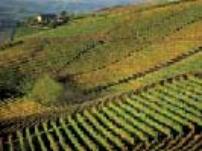
Wines:
Cinqueterre,Cinqueterre Sciacchetrà
Specialities:
Farinata, Acciughe sotto sale, Mes-ciüa, Spungata
Itinerary in detail:
Riomaggiore | Monterosso al Mare | Manarola |
Corniglia | Vernazza | Sarzana | La Spezia | Castelnuovo Magra
Castelnuovo
Magra and Liguria’s Enoteca Regionale
The journey to the Cinque Terre begins at
Castelnuovo Magra, where the Ligurian Enoteca Regionale (Regional Wine
Centre) can be found in the rooms below the town hall. Here on display
are all the wines of Liguria, with particular emphasis on Cinque Terre
and Colli dei Luni DOC wines. The trip is worthwhile because it offers
a complete panorama over the region’s wine production. It’s
amazing to think how much wine comes from such a small vineyard area
(just a few thousand square metres). Castelnuovo Magra is an ancient
town with some beautiful parts to it. Just at the beginning of the
town there’s the beautiful Rococo façade of the Oratory of the
Whitefriars (Oratorio dei Bianchi). Climb up a few metres and you
reach the little piazza of the parish church, Santa Maria Maddalena.
The church itself dates back to late Renaissance times, while the façade
was constructed in the XIX century. On the main doorway, there’s a
fine seventeenth-century bas-relief depicting the penitent Magdalene
and donor. Inside, the six Carrara marble columns which divide the
nave and aisles come from Santa Maria Assunta in Luni. There are
numerous works of art: carvings in wood, bas-reliefs, above all an
altarpiece Calvary by Pieter Breughel the Younger, copied from a 1559
original by Pieter Breughel the Elder, and a Crucifixion attributed to
the celebrated Flemish painter, Anthony Van Dyck
Luni’s
noble past
From Castelnuovo Magra the road runs for a short
stretch along the plain towards the coast up to the ruins of Luni, a
Roman town that used to be on the sea shore and now lies two
kilometres inland. Archaeological excavations have shown that the town
was once very lively and prosperous. Luni’s decline began when its
harbour became unusable as the river Magra repeatedly overflowed and
washed soil and detritus down to silt up the port. Other setbacks,
such as the Norman and Lombard invasions, and the loss of the
bishopric to Sarzana in 1204, signalled the town’s final demise.
Today the ruins contain a museum with some of the finds discovered in
the excavations. Other remains can be found in the museums in La
Spezia, Carrara (in Tuscany), and Genova Pegli
Sarzana
and its monuments
From Luni turn north and, once past Castelnuovo Magra again, the road
comes to Sarzana. The town’s origins lie back in the X century when
refugees from Luni founded a town on the hill where Sarzana stands
today. It’s worth seeing the ancient palazzi in Piazza Matteotti and
Via Mazzini in the historic town centre. Via Mazzini is the main
street and boasts many shops, as well as the remains of a XIV-century
house that belonged to the Buonaparte family. The cathedral of Santa
Maria Assunta is worth a visit; here the most important local artists
have left their mark from the XIV to the XVII century. Sarzana holds a
wine festival in August organised in collaboration with the Enoteca
Regionale at Castelnuovo Magra. The centro storico is full of antique
dealers, from Italy and abroad, in August, at Easter and during the
Christmas holidays.
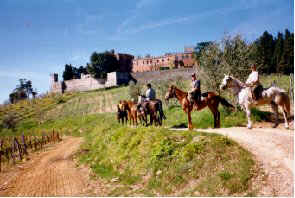
La
Spezia: a naval arsenal
From Sarzana go west to La Spezia. The town looks out over the
eponymous gulf, a place of great natural beauty and very popular with
tourists. La Spezia’s origins date back to the XIII century when
Count Nicolò Fieschi made the little hamlet of “Spetia” into a
defensive fortification in his struggle against Genova. In the
centuries that followed the town belonged to the Republic of Genova.
Its period of real growth began in the second half of the nineteenth
century when it became the military base of the Kingdom of Sardinia
and the Arsenal was constructed. Visit the castle of San Giorgio and
the XIV-century Duomo, dedicated to the Assumption and rebuilt after
the last war in Romanesque style. The Duomo contains important
pictures and sculptures from the XIV century. The Arsenal (Arsenale
Militare) was rebuilt after the Second World War and is Italy’s most
important. Inside, the Naval Museum displays weapons and models that
take the history of seafaring from its origins to the present day.
Finally, visit the Archaeological Museum (Civico Museo Archeologico U.
Formentini) to see the statues and stele from the ancient city of Luni,
dating back to the Bronze and Iron Ages
Riomaggiore
and Manarola: two real gems
Go on through La Spezia and the road starts the
climb up to Riomaggiore, the southern entry point for the Cinque
Terre. Here, at about 300 metres above sea level, the panoramic views
from the road reveal the coast in all its beauty. The cliffs seem to
fall straight into the sea and crammed into crevices in the few
ravines that cut through them are five fishing villages, five and
therefore called the “Cinque Terre”. Their names are Riomaggiore,
Manarola, Corniglia, Vernazza and Monterosso al Mare. Riomaggiore is
the wine-producing centre of the region. The setting is truly
spectacular; houses sit one on top of another pressed between the
rocky shore and an amphitheatre of vineyards, orchards and olive
groves. The village itself is tiny and takes only a few minutes to
visit. But don’t miss the walk along the “Via dell’Amore” (“Love’s
way”) a narrow path cut out of the rock with sheer drops into the
sea. After about a kilometre and a half the path comes to Manarola,
the next village of the Cinque Terre, where there are several ancient
wineries. Everything in Manarola is minuscule and really doll-like;
even the wine producers are to be found in the ground floors of houses
squeezed into the space between the narrow alleys and streets
Up
and down the steps at Corniglia
The next village after Manarola is Corniglia, a town of peasant
farmers and fishermen, full of interminable stairways and steps, built
about 100 metres above sea level. This is the only village in the
Cinque Terre not to have direct access to the sea; instead you have to
go quite a distance down 360 steps to get to the water. In ancient
times Corniglia was built as a defensive fortification with its own
castle and a section of the village with a church dedicated to Santa
Maria Maddalena. Over time, the sea has washed all this away. What
remains are the ruined town walls and, in the current town graveyard,
the ruins of the castle. There are two interesting churches to see:
San Pietro (XIV century) and the sanctuary of San Bernardino perched
on the hill above Corniglia
Vernazza,
town of farmers and fishermen
After Corniglia comes Vernazza, the only town in
the Cinque Terre to have its own harbour. In Roman times this is where
shipments of a white wine called Vernaccia would leave from, a
practice that gave the town its name. Mediaeval in origin, the town is
full of narrow alleys that lead up to the vine-covered terraces behind
it. Round the little piazza facing the harbour there is a group of
buildings that includes the XIV-century Gothic church of Santa
Margherita di Antiocha and some ancient palazzi built in the local
stone. Of the fortifications that were originally built to ward off
Saracen raids there remains a watchtower, built on a rocky spur with a
panoramic view of the locality. Finally, 310 metres above sea level
and accessible by a narrow mule track through the vineyards and olive
groves, there lies the Sanctuary of Nostra Signora di Reggio
Monterosso
al Mare and the Giant of the Cinque Terre
From Vernazza go to the last and the most populous of the five Cinque
Terre, Monterosso al Mare. The hill called Colle San Cristoforo,
pierced by the old railway tunnel, divides the town in two; on one
side there’s the old town proper and on the other side the beach at
Fegina. Fegina is dominated by the famous concrete statue of the Giant,
built beside the terrace of a local villa. This statue was created at
the beginning of the XX century by Levacher and Minerbi, an architect
and a sculptor, and represents Neptune, the god of the sea. Now it has
become the symbol of Monterosso. Visit the parish church of San
Giovanni Battista in the old town (XIV century), and, on Colle San
Cristoforo, the convent and Capuchin church of San Francesco (XVII
century). Inside, there are works attributed to the Flemish painter,
Van Dyck, and to Italian Old Masters. High up at 400 metres above sea
level is the sanctuary dedicated to the Madonna di Soviore. The church
as you see it dates back to late Mediaeval times, but excavations
currently going on have revealed sections of a much older church,
perhaps going back as far as the IX century
|
